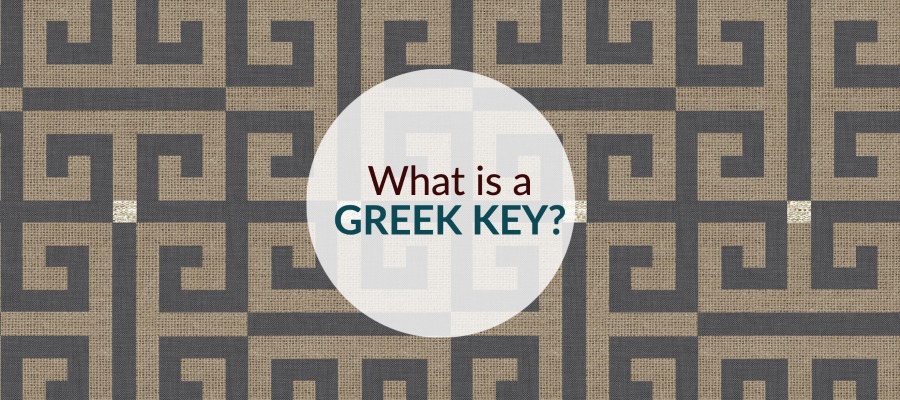
What is a Greek Key?
The Greek Key is a common motif in textile design and many other places where decorative elements are necessary. Whether or not you know the name, you have most likely seen a Greek Key design. In fact, it may even be in your home. Often used as a border, it is also used frequently in stripes. It is so versatile; it even appears on its own in allover patterns.
Though it is referred to as a Greek Key, this distinct meander pattern is found in decorative designs worldwide. Artists and artisans outside of Greece were using it long before the Ancient Greeks. Many early civilizations around the world, who weren’t communicating with each other, used similar patterns. The Greeks, however, really embraced it and started using it everywhere.
In the classic book on world patterns, Owen Jones’s The Grammar of Ornament, Jones describes the Greek fret as ranging from a simple form to a “more complicated meander.” Creating patterns by only interlacing lines at right angles is a limited exercise and eventually led designers, both in ancient Greece and more modern times, to push the boundaries. Lines stop and start, change scale or intersect in surprising places. Sometimes the shapes are juxtaposed with solid areas or more organic motifs.
As a motif, the Greek Key falls into the larger category of fretwork.
In fact, sometimes, it is referred to as the Greek fret. Many designs fall under the category of fretwork. What they have in common are designs made with short lines at right angles. They never meet or seal off and visually create a square or grid. These repeating and nesting lines are reminiscent of a labyrinth. Supposedly, fretwork symbolizes eternity since its designs have no beginning or end.
How did this ancient design go mainstream?
The printing industry exploded during the industrial revolution. This technological leap forward coincided with a renewed interest in the classical antiquity of European culture. People were looking toward ancient Greece with nostalgia and revering it as the epicenter of Western civilization and culture. Designers saw architects in ancient Greece using a Greek Key design often in its buildings and decorative elements on items such as ceramics and pottery.
Inspired by these forms, designers began to incorporate these elements from architecture into textile designs. During this time, the Greek Key became one of the most versatile and widely used patterns.
Our fascination with the Greek Key continues.
The Greek Key as a motif continues to stand the test of time. Interior designers still use this pattern when they want something decorative but still simple. It adds an element of architectural interest to a room and is usable at nearly any scale. On a rug, this motif anchors a room, and on pillows, it brings sophistication.
However it’s used, we sure the Greek Key will continue to be a classic motif. For sure, our design team uses it in our pattern designs. We also continue to see interior designers incorporating it into projects. Do you have a Greek Key somewhere in your home? Look around, you just might!
Share this post
Author
DESIGN/COLOR TRENDS AND AWESOME INFORMATION IN YOUR INBOX
Sign up for our monthly trend letter







